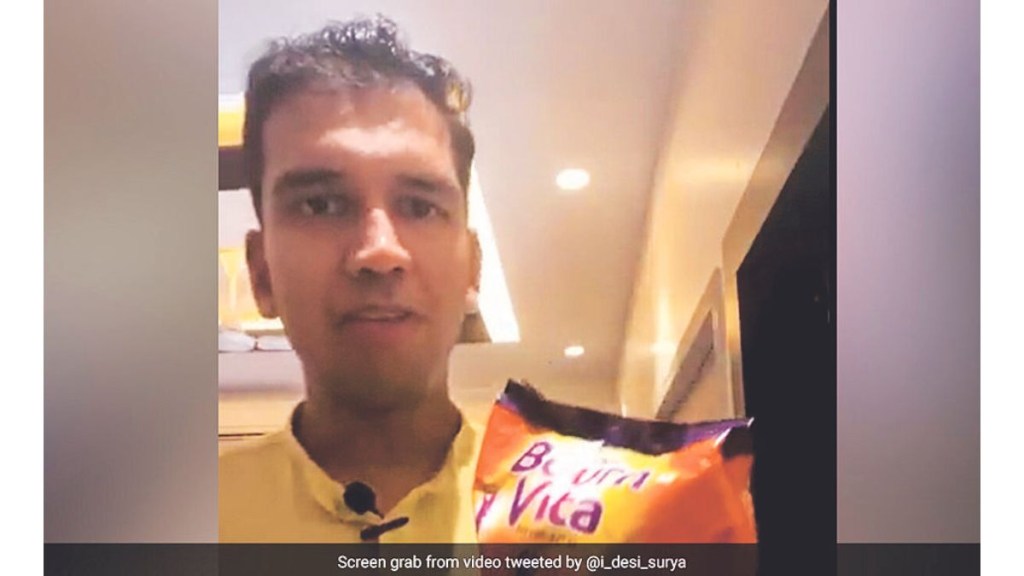The recent spat between Mondelez India Foods and influencer Revant Himatsingka (Foodpharmer), who boasts of over 130,000 followers on Instagram, regarding the health benefits of Bournvita raises an important question: How can brands effectively handle influencers who seek to “de-influence” potential consumers? More importantly, what should the appropriate communication strategy be in such cases?
Himatsingka’s video denouncing the presence of sugar in Bournvita along with claims of “cancer-causing” ingredients went viral on social media, amassing almost 12 million views. He had to take down the reel after being served a legal notice by Cadbury. “The video created panic and anxiety and questioned the trust that consumers have bestowed on brands like Bournvita. As we continued to witness an abnormal and unusual amount of traction on the post, we were constrained to take legal recourse to avoid misinformation. We also issued a statement to clarify and share the correct facts to allay the concerns of our consumers,” the company told FE.
Kalyan Kumar, CEO and co-founder of KlugKlug, points out: “Most comments after the post was taken down were in favour of Himatsingka. Brands need to understand that influencers are the underdogs in this narrative. The brand won the legal battle, but the influencer won the public vote.”
Internet users continue to chime in. “It is certainly not a positive development for Bournvita to be under the spotlight on a controversial subject. The problem with mud-slinging is that even if the target is completely innocent, some mud invariably sticks, thus causing some damage, at least in the short term. The bigger the target, the more the mud tends to stick,” says Samit Sinha, founder and managing partner, Alchemist Brand Consulting.
So what can brands do differently to protect themselves from such a fiasco? A lot, say experts.
First, they must listen and engage. Being constantly open to feedback, whether positive or negative, is a must. They can then evaluate the negative feedback to address concerns or take corrective action on time.
Says Karthik Srinivasan, an independent communications consultant: “The problem is that brands don’t see any value in 24×7 listening because nothing much happens for 364 days, but the one day something does happen is precisely why they should constantly listen. Social listening is like insurance — we pay the premium even if nothing happens, but in the event of something happening, we finally realise how valuable that insurance was.”
Second, they must respond as soon as possible to the problematic de-influencing content in a calm and collected manner. While Himatsingka posted his video on April 1, Bournvita took several more days to react. Some say the brand might have been caught off-guard, and deliberated with its internal team for the best response, by which time the content had gone viral. The reaction was too late and may have appeared like a kneejerk one at this point.
The third step is to use truth as the defence, presented clearly and succinctly. Himatsingka’s allegation that the caramel colouring was cancer-causing had the maximum potential to harm Bournvita. However, the company in its clarification did not respond or point out that the USFDA has cleared the use of the colouring. The response did not have any emotional connection, was generic, and sounded like “corporate speak”, say experts.
“The personal connect is precisely what helped Cadbury during the worm scandal when they got Amitabh Bachchan to offer his emotional monologue as the brand’s response. Or Aamir Khan’s seemingly genuine factory tour pitch by Coca-Cola when they were facing the pesticide scandal,” says Srinivasan.
Moreover, the mode of dissemination is also important. “Imagine the CEO of Cadbury India addressing all employees of the company about their side of the story to the offending video and that becoming the brand’s official response on social media. The delivery method makes an incredible difference,” Srinivasan adds.
Finally, brands can also consider partnering with influencers who have a different point of view to counter opposing viewpoints. This can create a debate or discussion rather than a one-sided narrative, say experts.
However, it is not just the brands that need to be hyper-vigilant. Influencers must also be able to back up the claims they make on social media or else can land in legal trouble. “Everyone is free to voice their opinion so long as it is based on facts and is not made in a defamatory way. It may also be useful to speak of a group of products and brands rather than target a single one, as that may create an impression or doubt that competitive forces could be behind such a post,” says Manisha Kapoor, secretary-general, Advertising Standards Council of India.
There are no easy answers in such situations, says Sandeep Goyal, MD, Rediffusion. “A lot of FMCG claims are in the grey area so it is hard for brands to respond with a black or white stance. This is what some influencers take advantage of. However, I feel there is nothing wrong with serving a legal notice. Gone are the days when companies could stay silent and wait for things to blow over. Now, they have no choice but to react as 10 others could pick the story up and the mud-slinging would never end.”

